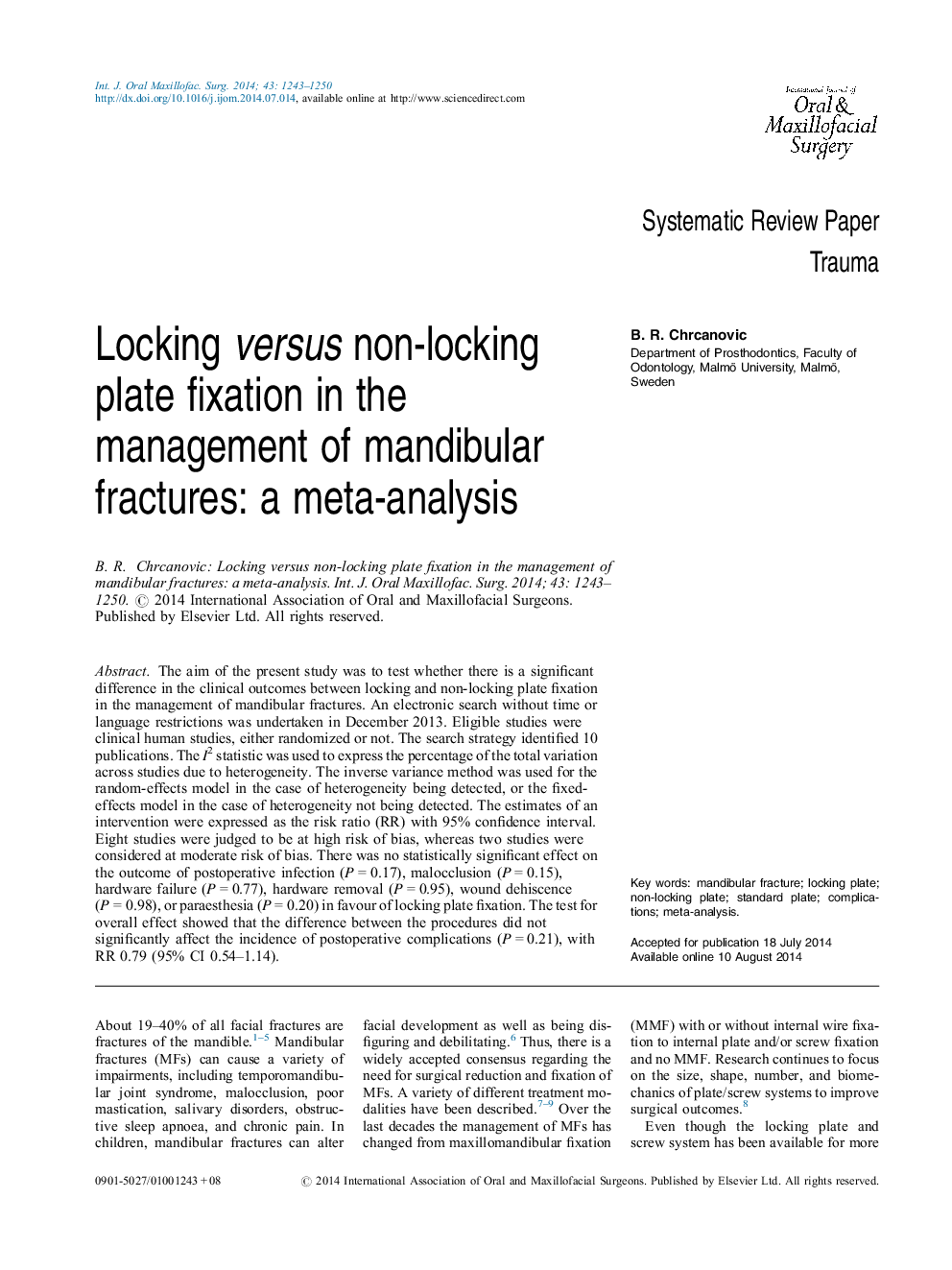| Article ID | Journal | Published Year | Pages | File Type |
|---|---|---|---|---|
| 6052434 | International Journal of Oral and Maxillofacial Surgery | 2014 | 8 Pages |
The aim of the present study was to test whether there is a significant difference in the clinical outcomes between locking and non-locking plate fixation in the management of mandibular fractures. An electronic search without time or language restrictions was undertaken in December 2013. Eligible studies were clinical human studies, either randomized or not. The search strategy identified 10 publications. The I2 statistic was used to express the percentage of the total variation across studies due to heterogeneity. The inverse variance method was used for the random-effects model in the case of heterogeneity being detected, or the fixed-effects model in the case of heterogeneity not being detected. The estimates of an intervention were expressed as the risk ratio (RR) with 95% confidence interval. Eight studies were judged to be at high risk of bias, whereas two studies were considered at moderate risk of bias. There was no statistically significant effect on the outcome of postoperative infection (PÂ =Â 0.17), malocclusion (PÂ =Â 0.15), hardware failure (PÂ =Â 0.77), hardware removal (PÂ =Â 0.95), wound dehiscence (PÂ =Â 0.98), or paraesthesia (PÂ =Â 0.20) in favour of locking plate fixation. The test for overall effect showed that the difference between the procedures did not significantly affect the incidence of postoperative complications (PÂ =Â 0.21), with RR 0.79 (95% CI 0.54-1.14).
